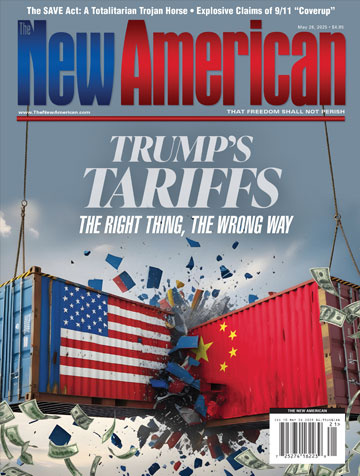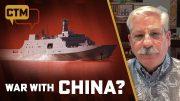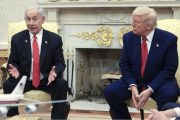
SINGAPORE – Recently, The New American reported that Daniel Duggan, a former U.S. Marine fighter pilot, faced charges for breaching U.S. arms-control laws by training Chinese military pilots to land on aircraft carriers. Currently, Duggan is awaiting extradition from Australia to the United States.
Should such charges be true, Duggan indeed committed a treasonous act for teaching Chinese pilots as well as enhancing the know-how of the communist-controlled People’s Liberation Army (PLA) of China.
Yet Duggan is not a lone wolf in supporting communist China’s military build-up. That Beijing could transform the PLA into a formidable force meant that it had the economic resources to do so, resources such as capital and enterprise that its communist ideology claims to scorn.
This then raises the question of who aided Beijing in boosting its economy and military in the years following Mao Tse-tung’s destructive Cultural Revolution that left China’s economy in tatters.
Enter U.S.-based Silicon Valley firms, Wall Street financial entities, and various branches of the U..S government.
Indeed, for the past three decades or more, these American entities and individuals have been embroiled in projects and agreements that propelled China’s economy from a communist-controlled one teetering on the brink of collapse after the Cultural Revolution to the world’s second-largest economy in 2023.
With an economy that was thriving in the years before leader Xi Jinping’s zero-Covid policy brought the entire country — economy included — to its knees, the communist regime in Beijing was able to channel huge amounts of funds to purchase state-of-the-art weaponry and equipment as well as revamp its military command structure.
The result? In 2023, China now boasts one of the world’s most sophisticated armed forces, rivaling that of the United States.
Strider Technologies in September 2022 reported that at least 154 Chinese scientists who were involved in government-sponsored research at top national security laboratories in the United States over the past 20 years were hired to do “scientific work” in China. Such “scientific work” included boosting China’s military technology, weakening U.S. national security as a result.
The same report claimed that such collaborations were part of a systemic effort by the communist government of China to put Chinese scientists at Los Alamos National Laboratory, where U.S. nuclear weapons were initially built.
Subsequently, Beijing hired many of these scientists back to China to boost its own military with advances in technologies such as deep-earth-penetrating warheads, hypersonic missiles, stealth submarines, and drones, the report continued.
Scientists were compensated with as much as $1 million by their involvement in Chinese government “talent programs,” which are meant to lure Chinese scientists back to the mainland.
Although alarm bells have been sounded in the United States regarding such talent programs, NBC News reported that U.S. officials claimed they had not hitherto read an unclassified report that portrayed the scenario in such a detailed manner, including pointing out particular scientists and their past projects.
The talent transfer “poses a direct threat to U.S. national security,” asserted Greg Levesque, a co-founder of Strider and the lead author of the report. “China is playing a game that we are not prepared for, and we need to really begin to mobilize.”
While a former Los Alamos scientist pleaded guilty in 2020 to lying about his participation in a Chinesse recruitment program, most of the actions portrayed in the Strider report seemed to have been legal.
NBC News further reported that some U.S. officials shrugged off the presence of Chinese scientists in U.S. security institutions, claiming that most Chinese scientists who immigrated to the United States remained there, with many contributing a great deal to U.S. defense technology.
Nonetheless, current and former U.S. intelligence officials observed that the Strider report reflected how the Chinese government has been using talent recruitment programs to gain insights into U.S. technology.
Such knowledge and skills acquired were then used to build the Chinese military, making it a formidable threat to American national defense. The officials stated that China’s hard-line turn under Xi is prompting a reconsideration of scientific exchange between China and the United States.
“We have benefited enormously from the inflow of Chinese talent,” said Robert Daly, a China specialist at the Wilson Center, a congressionally chartered nonpartisan research institute. “And I hope that we can continue to do that — it’s essential to the United States. But China is now developing weapons systems, capabilities, doctrines and, frankly, attitudes toward its own power that means we have to go back to the drawing board in some of these areas.”
Daly’s concerns were also echoed by a bipartisan Senate report in 2019 that said China’s Thousand Talents Program and like-minded initiatives were a means for China to tap into U.S. expertise and boost its own military.
“Through talent recruitment programs like the Thousand Talents, China pays scientists at American universities to secretly bring our knowledge and innovation back to China — including valuable, federally funded research,” FBI Director Christopher Wray articulated in a speech in 2020. “To put it bluntly, this means American taxpayers are effectively footing the bill for China’s own technological development.”
Los Alamos, where the atomic bomb was developed during World War II, focuses on science and engineering to boost American national security. Nevertheless, much of the research done there has been accessible to the many foreign scientists working at the lab.
Questions aimed at Los Alamos officials were referred to the Energy Department, which refused to respond to the Strider report’s claims.
In a statement to NBC News, the Energy Department said that America’s “national security and defense require fierce protection of critical technology development, even as we safeguard the open science research that underwrites the United States’ technology leadership.”
“In response to growing research security threats, the Department of Energy has taken significant steps in recent years, including the adoption of rigorous vetting, counterintelligence reviews, and restrictions on participation in foreign talent programs,” the agency continued. “The Department of Energy also implements procedures to ensure compliance with U.S. export licensing requirements, including those governing the release of controlled technology to foreign nationals in the United States.”
Indeed, the Strider report also indicated that the Energy Department implemented a rule in 2019 banning employees and contractors from getting involved in talent programs associated with China, Russia, Iran, and North Korea. The rule seemed to have mitigated the brain drain, the report added.
Bill Evanina, who worked from 2014 to 2021 as the top counterintelligence official in the U.S. government, admitted he has read many classified reports over the years detailing the issue of technology transfer via talent transfer.
Still, he acknowledged, “this is the first time where we have a comprehensive, open-source reporting that identifies the people, the places, the services and the organizations in China who are benefiting from that talent who once worked here at national labs.”
Additionally, Evanina and other officials said Los Alamos is by no means the only U.S. laboratory targeted by China to tap into American technology and know-how for its own military use.
Quoting public information posted on websites in the United States and China, the Strider report incorporated particular details about scientists such as Zhao Yusheng, who received almost $20 million in U.S. taxpayer grants during an 18-year stint at Los Alamos. During his sojourn, Zhao held a top-secret Q clearance and directed a defense project developing bombs that can penetrate deep underground.
Afterwards, Zhao joined a talent program in 2016, and left the United States for a job at a research center in China, the Strider report indicated. Back in China, Zhao became a vice president at China’s Southern University of Science and Technology, known as SUStech, which conducts defense research.
The Strider report added that 15 scientists who worked at Los Alamos eventually worked at SUStech, including the president, Chen Shiyi, who contributed immensely to China’s hypersonic missile program.
“No one can say this is not a national security issue,” Evanina admitted. “Because from hypersonics to acoustical capabilities and to warheads, we are perpetrating the ability for adversaries to utilize weapons against us. And that is hard for any American to swallow.”
“The correct number of Chinese or Russian citizens at our weapon labs should be zero,” said Representative Mike Rogers (R-Ala.), who has been the ranking member of the House Armed Services Committee. “We cannot turn a blind eye to the vulnerable position the U.S. is put in when foreign adversaries are able to access critical U.S. technologies.”
Apart from the Los Alamos talent transfer issue, the US-China Sanya Initiative Dialogue has been frequently organizing high-level dialogue between retired American and Chinese generals and admirals on the pretext of boosting bilateral military-to-military relations since 2008.
On top of that, the White House and Congress permitted China into the World Trade Organization (WTO) in 2001, and financial regulators began listing Chinese firms on American stock exchanges in 2013.
Such American actions only paved the way for China to obtain the capital and foreign exchange to purchase things such as iron ore to produce steel for PLA Navy ships and more.
Furthermore, there was only one “politically correct” perspective on China in U.S. academic circles and government bodies for years — namely, that China was a benign power navigating its place in the world. Former U.S. government officials were and still are involved in think tanks and consulting firms in which they liaise with Chinese clients and assist them in ways to facilitate their agendas.
An article by Project Syndicate cited one Ivy League academic who was also a former government official during the Clinton administration as saying, “When I was supervising the Pentagon’s East Asia Strategy Review in 1994, we rejected the idea of containment of China for two reasons. If we treated China as an enemy, we were guaranteeing an enemy in the future. If we treated China as a friend, we could not guarantee friendship, but we could at least keep open the possibility of more benign outcomes.”
Clearly, the U.S. military seemed to be on friendly terms for some time with their Chinese counterparts. For instance, in 2007, the chief of naval operations, Admiral Mike Mullen, invited the head of the Chinese Navy, Vice Admiral Wu Shengli, to tour a U.S. aircraft carrier and a fast attack nuclear submarine.
One former U.S. intelligence officer took note of this and other similar visits: “The PLAN [People’s Liberation Army Navy] officers would ask 100 questions and get 100 answers from their American counterparts, but whenever an American officer asked a PLAN officer a question … they got no answer.”
In 2008, a former U.S. Marine Corps commandant met the PLA Navy Marine Corps on a “getting to know you” visit and gave a lecture to the Chinese Marines.
During a visit to Beijing, the U.S.-Indo Pacific Command (USINDOPACOM) commander, Admiral Thomas Keating, did not appear to be too concerned with the PLA harboring aircraft carriers and even volunteered to aid.
“It is not an area where we would want any tension to arise unnecessarily.… And we would, if they choose to develop [an aircraft carrier program], help them to the degree that they seek and the degree that we’re capable of, in developing their programs,” Keating said.
Notwithstanding its bellicose actions in the South China Sea against American Navy ships and allies such as Taiwan, the PLA was invited to the U.S. Navy’s premier RIMPAC exercise in 2014 and 2016. In what seemed to be naïveté, the United States perceived that such friendly exchanges would change Chinese behavior and help avoid miscalculations.
Worries about the level of Chinese involvement in U.S. military projects and operations were quelled as well.
2014 saw the reassignment of Captain James Fanell, a senior Navy intelligence leader who made prior remarks cautioning the United States about Chinese pugilism. Similarly, in 2013, one senior Army commander in the Pacific bluntly brushed off Japanese Ground Self-Defense Force warnings. A senior Australian general in the room added that there was nothing to be concerned about from the PLA, and he was going to “extend the open hand of friendship.”
Also, after meeting Chinese Minister of Defense General Chang Wanquan in 2013, then-Defense Secretary Chuck Hagel remarked, “Substantive military-to-military relationship is an important pillar for this strong bilateral relationship. The United States welcomes and supports the rise of a prosperous and responsible China that helps solve regional and global problems.”
Even prior U.S. efforts to mitigate the outflow of talent and expertise to China were hampered by various factors. When the Justice Department in 2018 unveiled what it termed as the China Initiative to deter China from stealing U.S. research, accusations of racial profiling ensued, blowing the matter out of proportion. Consequently, the initiative was ditched.
Evidently, as this brief exploration has shown, China’s state-of-the art military did not arrive at its current height and sophistication overnight. Nor was Duggan the only (former) American involved in undermining U.S. security interests. After all, as The Epoch Times rightly put it, building up China’s military was a team effort.




